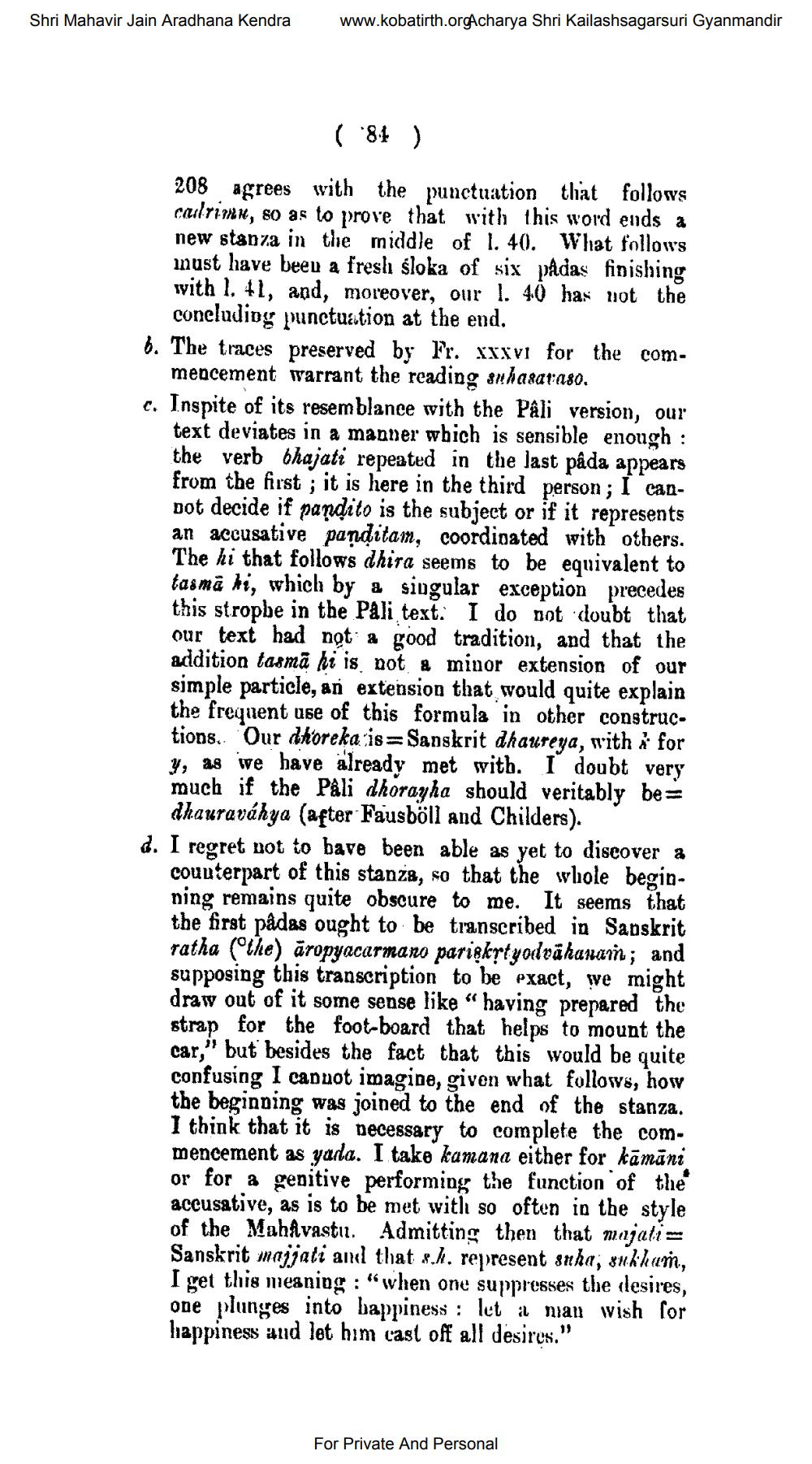________________
Shri Mahavir Jain Aradhana Kendra
www.kobatirth.orgAcharya Shri Kailashsagarsuri Gyanmandir
( 84 )
208 agrees with the punctuation that follows caultinn, so as to prove that with this word ends a new stanza in the middle of 1. 40. What follows must have been a fresh sloka of six pâdas finishing with I. 1, and, moreover, our I. 40 has not the
concluding punctuation at the end. 6. The traces preserved by Fr. xxxvi for the com
mencement warrant the reading anhadaraso. c. Inspite of its resemblance with the Pali version, our
text deviates in a manner which is sensible enough : the verb bhajati repeated in the last pâda appears from the first; it is here in the third person; I canpot decide if pandito is the subject or if it represents an accusative panditan, coordinated with others. The hi that follows dhira seems to be equivalent to tasmā hi, which by a siugular exception precedes this stropbe in the Pali text. I do not doubt that our text had not a good tradition, and that the addition tasma hi is not a minor extension of our simple particle, an extension that would quite explain the frequent use of this formula in other construc. tions. Our dhoreka is=Sanskrit dhaureya, with for y, as we have already met with. I doubt very much if the Pali dhorayha should veritably be=
dhauraváhya (after Fausböll and Childers). d. I regret not to bave been able as yet to discover a
counterpart of this stanza, so that the whole beginning remains quite obscure to me. It seems that the first pâdas ought to be transcribed in Sanskrit ratha (the) äropyacarmano pariskrtyodrähanam; and supposing this transcription to be exact, we might draw out of it some sense like “having prepared the strap for the foot-board that helps to mount the car,'' but besides the fact that this would be quite confusing I capuot imagine, given what follows, how the beginning was joined to the end of the stanza. I think that it is necessary to complete the commencement as yada. I tako kamana either for kāmāni or for a genitive performing the function of the accusative, as is to be met with so often in the style of the Mahkvasti. Admitting then that majatiSanskrit majjati and that .h. represent suha, sukkum, I get this meaning : "when one suppresses the desires, one plunges into bappiness : lut i mian wish for happiness and let him cast off all desires."
For Private And Personal




